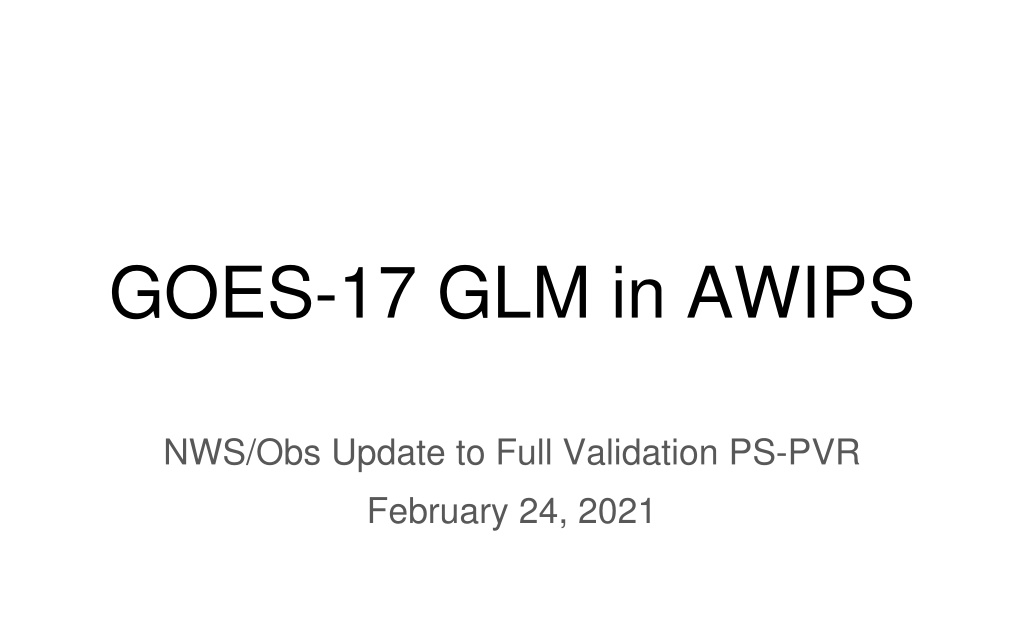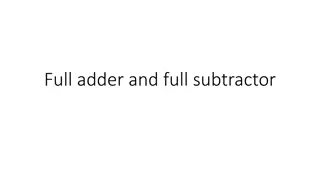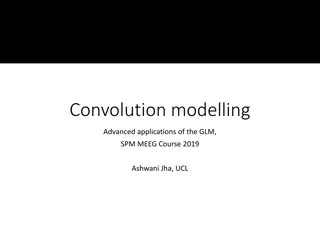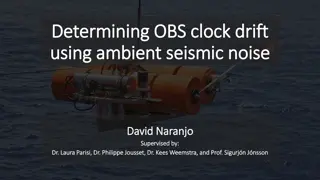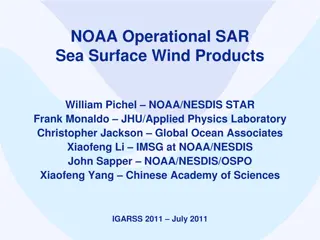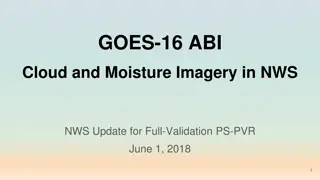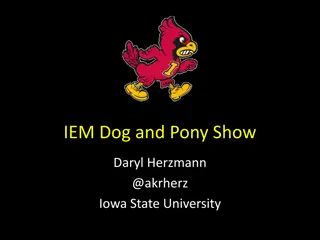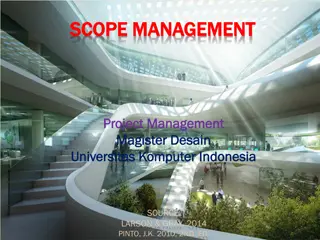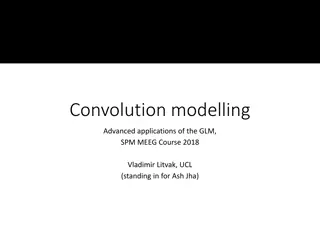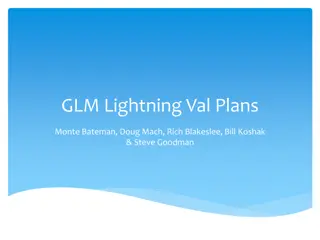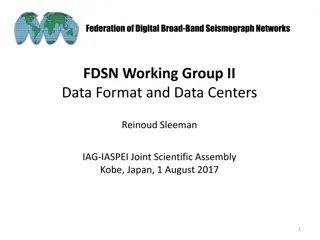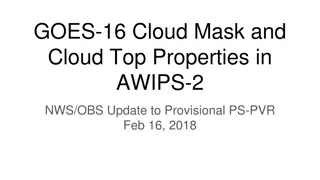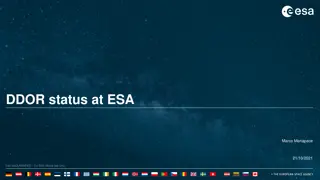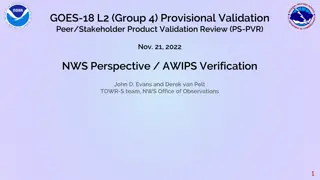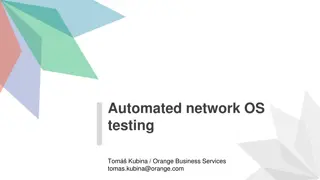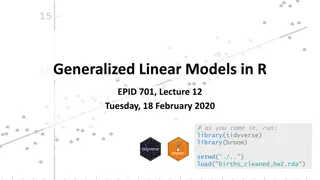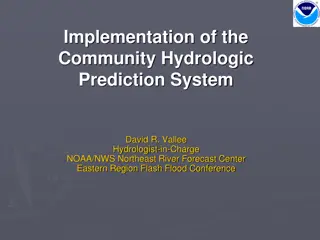GOES-17 GLM in AWIPS
The implementation of GOES-17 GLM in AWIPS involves fielding full-disk GLM products, transmission of data, product contents, and operational processes like data routing and display configurations. The update includes detailed information on the distribution of GLM tiles, transmission routes, product contents, and implementation steps for NWS offices.
Download Presentation

Please find below an Image/Link to download the presentation.
The content on the website is provided AS IS for your information and personal use only. It may not be sold, licensed, or shared on other websites without obtaining consent from the author. Download presentation by click this link. If you encounter any issues during the download, it is possible that the publisher has removed the file from their server.
E N D
Presentation Transcript
GOES-17 GLM in AWIPS NWS/Obs Update to Full Validation PS-PVR February 24, 2021
Outline Fielding of Full Disk GLM AWIPS Full Disk GLM Product Contents Sample Gridded GLM Products in AWIPS2 (CAVE/D2D) GLM into CSPP-Geo and Data assimilation in NCEP models Next Steps for GLM Implementation in NWS
Fielding of Full Disk GLM Transmission of GOES-East and -West GLM Full disk punctured tiles began in early December of 2020 Routed via Local Data Manager (LDM) from AWC thru Regions, then to sites (dev-ops data path) Configurations for AWIPS ingest and display have been fielded to via TOWR-S Redhat Package Manager (RPM) version 20 Available to all NWS Forecast offices, RFCs, Center Weather Service Units Deactivated the CONUS/PACUS GLM products in early January 2021 Full disk products have the same look and feel in AWIPS as the CONUS/PACUS products (same AWIPS plugin, colormaps, style rules) NOAA VLab, TOWR-S Updates/Mailers, NWSchat for outreach, deployment coordination TOWR-S RPM Version 20 presentation link in VLab can be found here TOWR-S RPM Frequently asked Questions link in Vlab can be found here 3
AWIPS Full Disk GLM Product Contents Full Disk tiles are derived from GLM L2 (from NWS GRB antenna downlink) One- and five-minute grids, both updated/distributed every minute containing the most- recent one- or five-minute summation: 1-min Flash Extent Density 1-min Minimum Flash Area (replaces Average Flash Area) 1-min Total Optical Energy 5-min Flash Extent Density 5-min Minimum Flash Area (replaces Average Flash Area) 5-min Total Optical Energy 1-min and 5-min GLM fields are packaged in separate files Each of the 61 tiles which make up a scene are also in a distinct file NWS is currently sending a tailored subset of available tiles See graphic next slide 4
Schematic showing GOES-17 Tiles For a given tile and scene time, a GLM product is produced if GLM detects lightning NWS Central Region sends G-17 GLM tiles 0-43 to Regional LDMs NWS Southern Region filters the data stream, sending only G-17 GLM Tiles 7, 8, 13 and 14 to SR offices 5
GLM into CSPP-Geo and Data assimilation in NCEP models CSPP-Geo into NWS Plans to integrate GLM into NWS GRB ingest systems Establish direct flow of GLM from GRB ingest systems into AWIPS Data assimilation into NCEP models Initial efforts are underway to pursue direct assimilation of flash extent density in collaboration with multiple partners Lightning obs are presently used as proxies for reflectivity and GLM is not yet used in operations. There are pending proposals under to advance this work via JTTI 11
Next Steps TOWR-S is working with GOES-R team on integration of punctured tile code to NESDIS production environment NWS is coordinating with NESDIS for operational deployment schedule TOWR-S is assisting UCAR staff on a COMET training module on GLM application during severe weather outbreaks over the CONUS June 3-4 / 6-7th 2020 NWS Office of Observations is carrying a milestone for transitioning GLM to operations (FY21 moving to FY22) NWS expected to update its GRB antenna system ingest software with CSPP-Geo add-on for GLM punctured tiles NWS GRB antennas serve National Center and OCONUS offices EMC efforts continue, evaluating assimilation of GLM into NWP systems TOWR-S support and coordination for CY 2021 GLM field evaluations in AWIPS 12
Thank You Questions/Comments?
GLM Gridded Products Description (1) GLM Flash Extent Density (FED) grids are produced on the Aviation Weather Center ISatSS* for distribution via terrestrial LDM to NWS WFOs and some RFCs on the CONUS ISatSS* uses the "glmtools" python package written by Eric Bruning at Texas Tech to compute one-minute FED Each Event in a one minute observation period is collected, mapped to its parent Flash, and assigned to a point on the GOES-16 ABI CONUS fixed grid array The FED is a count, for each pixel in the CONUS fixed grid, of the number of Flashes that had an Event located in that pixel If a Flash had multiple events take place in a single pixel, its FED contribution is still one * ISatSS - Integrated Dissemination Program Satellite Support Subsystem (a software application)
GLM Gridded Products Description (2) The ISatSS Points into GLM Grids (PiGG) application executes the glmtools code to: generate the minute-by-minute FED fields accumulate them into a sliding five minute array that updates once per minute packages the one- and five-minute arrays into an 8km resolution compressed netCDF4 file that is compatible with the AWIPS-II GOES-R imagery plugin Prior to FED grid generation, another ISatSS application uses a furthest from image center" technique to filter any given 20-second input L2+ file down to 25,000 Events. This is required to maintain latency performance in the face of glint blooming (spurious) Events
